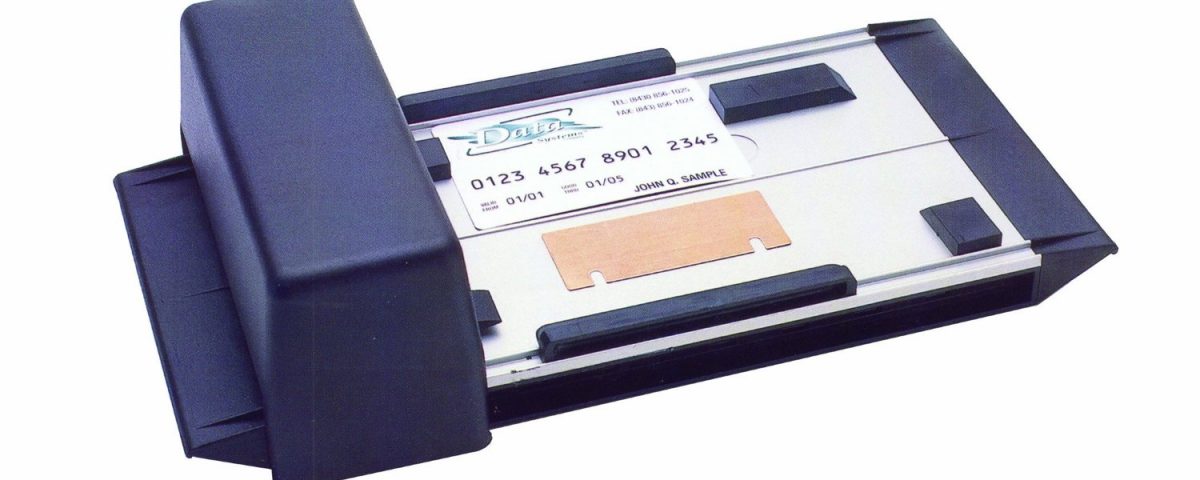
Gas station liability shift
September 26, 2017
The POS terminal
October 10, 2017We are going to take you back in time today. Back to the days before the Internet, before those nice POS terminals that you as a merchant use today. Back to the good ol’ days. Some of you reading this probably remember how credit cards were accepted. For the rest of you, there was a method to accepting credit cards before the Internet existed and it did not use electronics.
Using technology developed by Johan Gutenberg in 1440, the credit card imprinter allowed a merchant to use the raised numbers and letters to imprint information on carbon paper. When introduced it was a great leap in efficiency in how credit card information was processed. In an instant the earlier method of manually copying a card’s information onto a slip was changed. No more typos and no more problems with reading other people’s handwriting. No more over the phone authorizations that could take upwards of five minutes. Now a credit card could have its information taken and stored and a transaction completed in only the amount of time it took to compare signatures.
The imprinter would use the raised letters and numbers on the card to make an imprint on a piece of carbon paper. The card would be placed in bezels in the device to prevent movement next to a custom plate showing the merchant’s name and information. A metal or plastic piece would press the paper to the card as it passed overtop of the card making the imprint. Information regarding the transaction like the amount due and sales tax still had to be written manually. The customer would then sign the paper and as long as the signature matched that of the card the transaction would be complete. Paper copies could then be kept by the merchant and distributed to the customer and their processor.
Suffice it to say this was a dramatic step forward for merchants and customers alike. Minutes were dropped off of the amount of time it took to complete a transaction, which probably resulted in fewer dirty looks from customers who were paying with cash and created much more of a willingness to get a credit card for themselves.
There were of course problems. The devices gained the nickname of “knuckle busters” since a less than agile merchant could hurt their hand if they were not careful. There was no way to determine if a card would be accepted or declined much less stolen unless the transaction was phoned in for verification. Since only the signature on the slip and paper needed to match there was very little to combat identity fraud since a fraudster would either have a blank strip to affix their own signature to or they could mimic the signature on the strip. Electronic terminals were the next step in evolution and a primitive version of what we would today call a POS terminal was introduced by Visa in 1979. The magnetic stripe was introduced that same year.
The imprinter still remained in use well into the 1990s and they are still manufactured today. Many merchants keep them on hand in case of a power outage or Internet outage, after all the wheels of commerce can’t stop just because the Internet went down.




